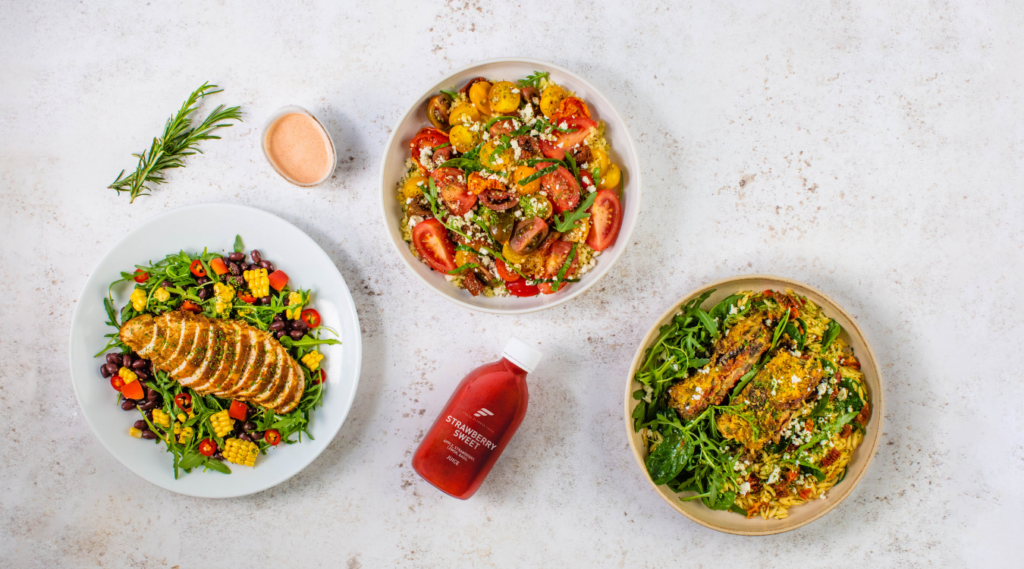The Relationship between our Brain and our Gut

For every cell in your body, there are 9 bacteria in your gut (3). This community of bacteria is what we call our gut microbiome which plays a very important role in our health and in our response to certain foods.
Research is difficult because no 2 gut microbiomes are the same: every human has a microbiome that is as different as their DNA.
This is because we all have a unique exposure to different bacteria depending on the microbes we inherit from our mother during birth (yes this really does occur in the way you are thinking – babies are born with a sterile gut and the first colonisers are bacteria from the mother’s birth canal and faeces) as well as through breastmilk. Further colonisation occurs by exposure to the environment, and the foods we eat.
Your genes also play a role, certain genetics make our gut a better place for some strains than others. Our microbiome also changes over time, as we age but also after each meal (4).
What effect does bacteria have on the body?
Not all bacteria are equally desirable to us, some are very useful, others just take up space, and some can make us ill. In a healthy person pathogens are kept in check by other microbes. A healthy gut microbiome has a lot of different species that are constantly competing with each other for a place to live in the gut. In a state of dysbiosis one pathogen can overcrowd others and cause problems. Dysbiosis can be a consequence of use of medications such as antibiotics, poor diet, disease and obesity (5).
Gut diseases linked to dysbiosis of our microbiome such as IBS and Crohn’s disease also increase the risk of mental illnesses such as depression and anxiety (3). The exact mechanisms aren’t fully understood yet but the gut microbiome seems to communicate with our central nervous system through the “second brain”, or enteric nervous system that covers our GI tract.
The Gut-Brain Axis
This is called the gut-brain axis and there seems to be a two-way traffic between them. Mental stress for example alters the environment of our guts in favour of pathogenic microbes. It makes our gut lining more permeable to pathogens and reduces mucus production (2).
Microbes also communicate with our brain by producing the same neurotransmitters that the brain uses – serotonin and dopamine: stuff that makes you feel happy. This is how your microbes can impact our mood (1) and partially explains why food makes us feel good.
Resources
- Anderson, S.C., Cryan, J.F. and Dinan, T. (2017). The Psychobiotic Revolution: mood, food and the new science of the gut-brain connection. Washington: National Geographic Society.
- Carabotti, M., Scirocco, A., Maselli, M. A., & Severi, C. (2015). The gut-brain axis: interactions between enteric microbiota, central and enteric nervous systems. Annals of gastroenterology, 28(2), 203-209.
- Collen, A. (2015). 10% Human: How Your Body’s Microbes Hold the Key to Health and Happiness. UK: William Collins Publishers.
- Rinninella, E., Raoul, P., Cintoni, M., Franceschi, F., Miggiano, G.A.D., Gasbarrini A., and Mele, M.C. (2019). What is the Healthy Gut Microbiota Composition? A Changing Ecosystem across Age, Environment, Diet, and Diseases. Microorganisms, 7(1).
- Valdes, A.M., Walter, J., Segal, E. and Spector, T.D. (2018). Role of gut microbiota in nutrition and health. The British Medical Journal, 361: Supplement 1.
- The Comfort of Tradition: Why We Crave Holiday Foods - December 23, 2024
- Is There a Place for Ultra-Processed Foods in Your Diet? - November 29, 2024
- Tempeh and Quinoa Power Bowl Recipe - November 7, 2024